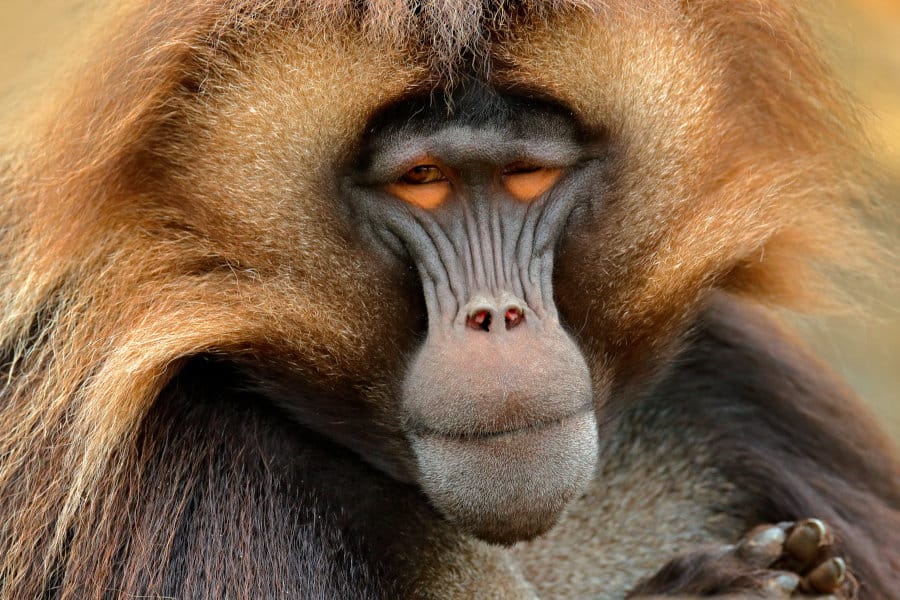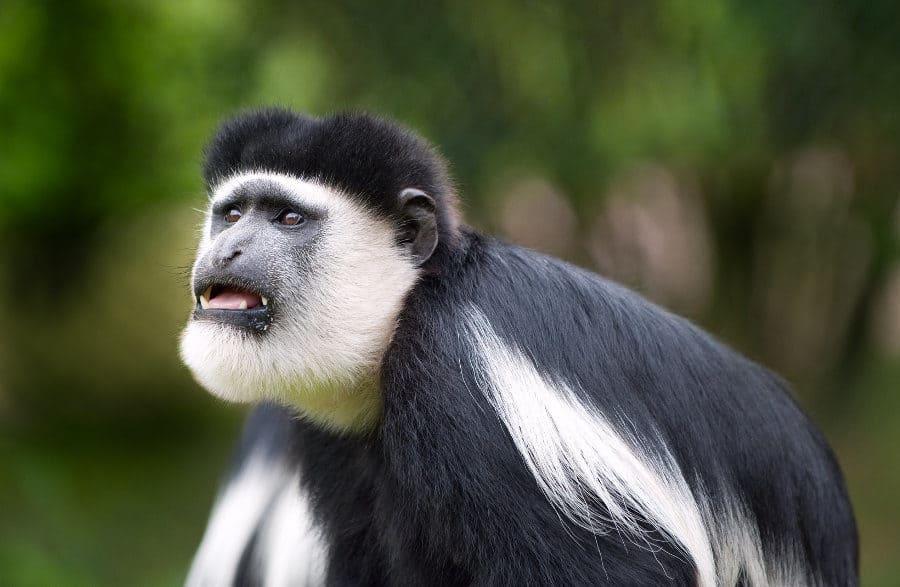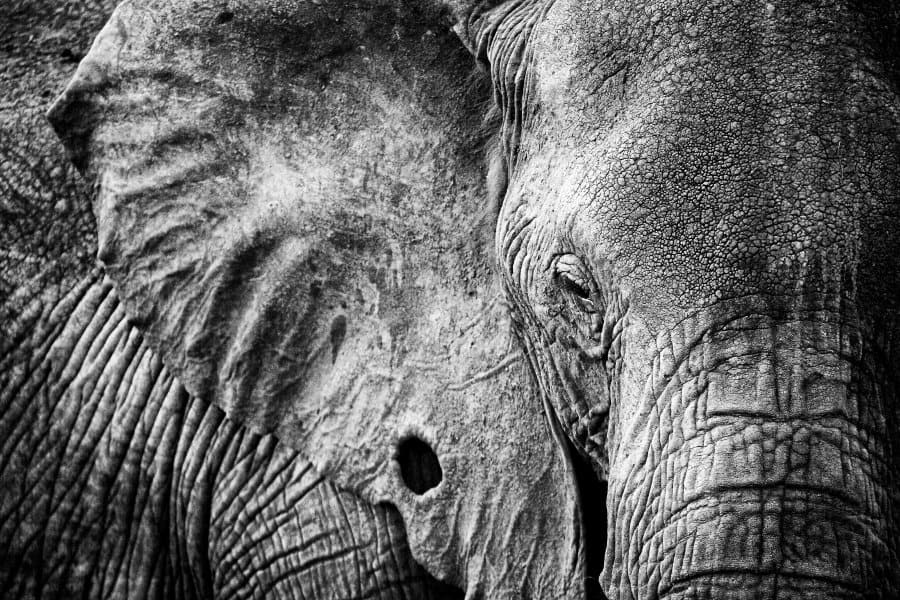Monkeys are a favorite animal for many people, especially children. Perhaps this is because we can see similarities between their behavior and ours and feel like we have a connection.
A common question we encounter from people on safari is how long monkeys live.
Monkeys are classified as Old World or New World monkeys. Old World monkeys, including baboons and macaques, can live anywhere from 20 to 45 years old.
New World monkeys, like capuchins, spider monkeys, and howler monkeys, live between 10 and 35 years of age in the wild.
The lifespan of monkeys can vary greatly depending on the species and where their natural habitat is located.
As we explore how long monkeys live, it is useful to remember that most monkeys can live twice as long when living in captivity or as pets. The environment is a significant factor in the age these primates can attain.
What is a Monkey’s Lifespan?
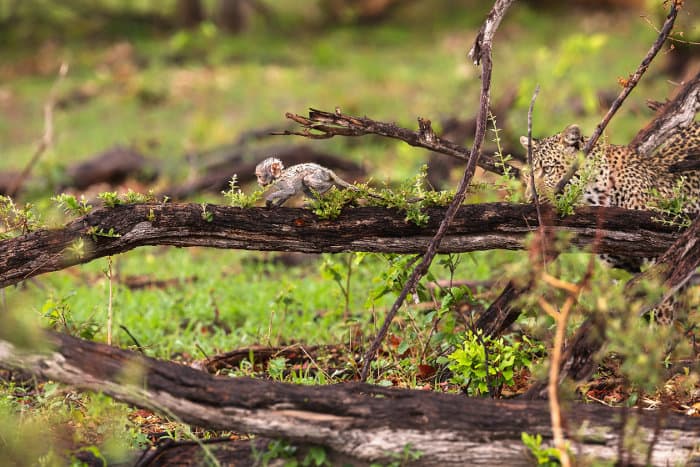
Monkeys have a surprisingly long lifespan, even when living in the wild in their natural habitat. In most cases, monkeys live longer lives in captivity than in the wild since they are protected from predators and disease.
The longest lifespan of monkeys in the wild is about 45 years, but not all monkey species have the same length of life.
Before we look more closely at how long monkeys live, it is important to clarify what we mean when we talk about monkeys.
Many people use the term monkey as an all-encompassing name to describe all non-human primates, which can lead to confusion when we only talk about true monkeys.
Prior to talking about how long monkeys live, we must define what a monkey is to make sure we are talking about the same animal.
Are all primates monkeys?
Not all primates are monkeys. Otherwise, you would be classifying yourself as a monkey! Primates are divided into two distinct groups: apes and monkeys.
Monkeys are generally smaller than apes, usually possess a tail, which apes do not, and are not quite as intelligent as apes. This is probably why some people take offense at being called a monkey!
You could, however, call someone an ape and get away with it since humans are classified as apes, along with gorillas, orangutans, chimpanzees, gibbons, and bonobos.
Monkeys are also segregated into two different groups. Old World monkeys are one group and live in Asia and Africa. New World monkeys are the second group and live in Central and South America.
Old World monkeys are so named because they have a longer genetic history, and New World monkeys evolved from the Old World monkey lineage.
Old World monkeys include the baboon families, macaques, and colobus monkey species. Some Old World species have faces resembling humans, while others, such as the baboons, have snouts similar to dogs.
New World monkeys are five families grouped under the umbrella term of Ceboidea.
Usually, they have rounded facial features, like everyone’s favorite, the capuchin monkeys, with their cute, irresistible little faces!
Do all monkeys have a similar lifespan?

Monkeys do not have similar lifespans, and they can vary from 15 years to 45 years. The differences in life expectancy are often attributed to the natural environment in which the monkey species lives.
From a human perspective, if you live in a tough neighborhood, your lifespan may not be expected to be as long as if you live in a safer place.
Similarly, the environment where monkeys live, the dangers in the wild, and prevalent diseases in the area can affect how long they live.
How long do baboons live?
Baboons are Old World monkey species that primarily live in Africa, with six different species within the baboon family.
The Guinea baboon is a species found in west Africa and is one of the longest-living monkeys. The Guinea baboon can live between 35 and 45 years, which is quite impressive.
The main contributor to the Guinea baboon living to such a ripe old age is very little vicious fighting and competition among males in the population.
Other baboon species, including the chacma baboon or Cape baboon, typically live in Southern Africa and live between 30 and 40 years.
The competitive fighting and higher density of apex predators contribute to lowering the life expectancy for chacma baboons compared to Guinea baboons, which have a much more limited distribution range.
Mandrills, while technically no longer grouped as baboons, are most striking with faces that look like they are painted for primitive warfare.
Local to western central Africa, the mandrill’s lifespan averages about 20 years in the wild, but they can live to 40 years in captivity.
Monkeying about on the plains of Africa can be dangerous for a baboon! Predators such as leopards, lions, birds of prey, crocodiles, and large pythons are all hazards that lower a baboon’s life expectancy.
The older baboons become, the less likely they will fall prey to predators smaller than lions and leopards, especially large male baboons.
Adult baboons are strong and ferocious, so if a baboon survives its junior and teenage years, it has a good chance of living a long life.
How long do macaque monkeys live?
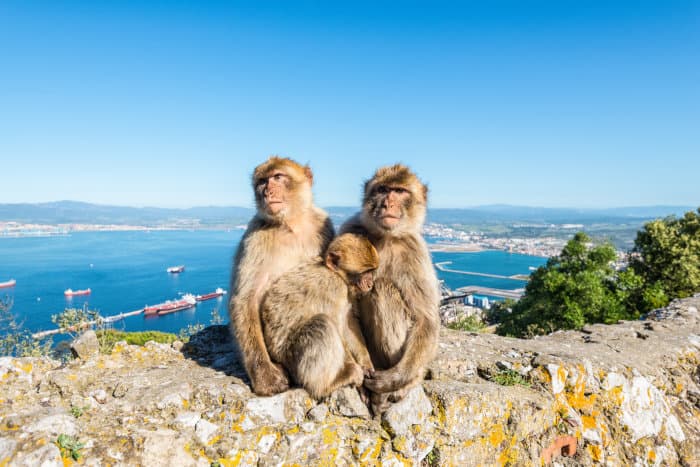
Macaques are another Old World monkey species that live in Asia, North Africa, and even Gibraltar.
Macaques are much smaller than baboons and pose less of a threat when living in close proximity to humans.
This characteristic makes macaques more tolerable to humans, and the monkeys happily co-exist with humans in some Asian cities.
Macaques typically live between 22 and 27 years in the wild, with the average being about 25 years. Macaques are often kept in captivity as pets or lab animals and can reach 40 years of age in this confined environment.
This is a good example of how habitat and living conditions can shorten or lengthen a monkey’s expected lifespan.
How long do talapoin monkeys live?
Talapoin is the last of the Old World monkeys we will examine regarding lifespan, and we have saved the cutest till last!
You may not have heard of these little monkeys, but they are the smallest of the Old World monkeys, reaching heights of between 12.5 inches and 17.7 inches (32-45 cm).
The male talapoin weighs in at 2.8 pounds (1.3 kg) and the females at just 1.7 pounds (0.8kg). These diminutive monkeys live primarily in Central Africa, from Cameroon to the Democratic Republic of Congo (DRC) and Angola.
Talapoins are often called swamp monkeys because they prefer to live in trees in rain forests or mangrove forests along rivers.
Swamp monkeys have adapted to their riverine environment to be strong swimmers and often forage in the water for food.
Their lifespan in captivity can reach as much as 28 years, yet the average lifespan in the wild is unknown.
How long do capuchin monkeys live?
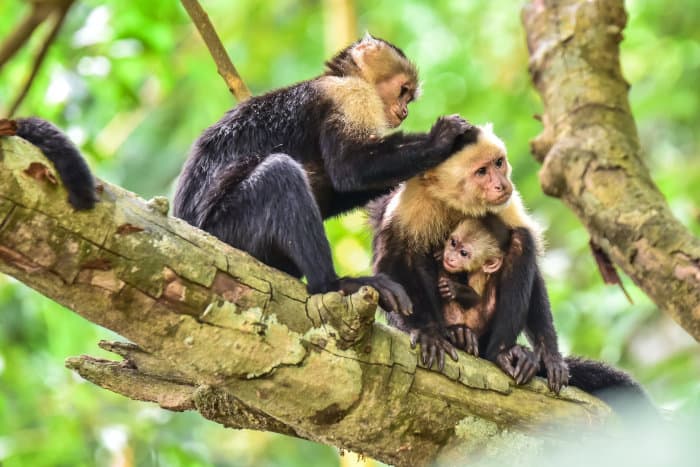
Capuchins are our first example of New World monkeys, and you can find these monkeys in the tropical forests of Central and South America.
Capuchin monkeys are well known to most people because these primates are often used in scientific lab experiments causing a public outcry against their cruel treatment.
These monkeys are used for experiments because they are the most intelligent of all the New World monkeys. They display an advanced understanding and use of tools, even in their natural environment.
Tool use is not typical in other monkeys and is mostly only seen in apes rather than monkeys. It makes you wonder why humans, the most advanced of the apes, have a tool called a “monkey wrench”.
The capuchin’s intelligence makes them easy to train, resulting in many capuchins having roles in movies. The capuchin is the stereotypical organ grinder monkey featured in many motion pictures.
The average lifespan of capuchin monkeys is 34 to 36 years in the wild, but they are known to live up to 55 years in captivity. That’s a lot of monkey years!
This long lifespan in captivity compared to the shorter natural lifespan is another example of the living environment affecting longevity.
How long do howler monkeys live?
Howler monkeys are an interesting New World monkey living in dense rain forests throughout Central and South America.
The loud howls of this monkey are audible up to a mile away, even through the dense canopy of the rain forests.
Some recordings have been made where the howler monkey vocalizations could be heard 3-miles distant, leading this monkey to be known as one of the loudest animals on the planet!
There are 15 species of howler monkeys currently identified, though the one you are probably most familiar with is the black howler monkey.
They are noted for their shiny black coats and loud howls, which are thought to have multiple functions, including mating calls, defining territorial boundaries, and guarding mates.
Howler monkeys, such as the black howler, live up to 25 years in the wild.
How long do spider monkeys live?
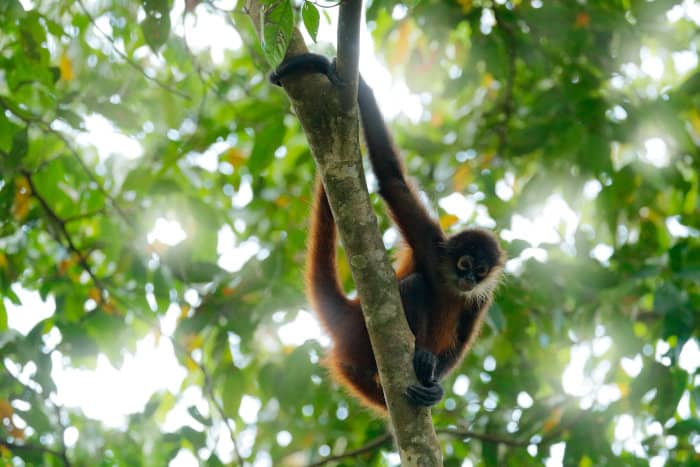
Spider monkeys are another favorite New World monkeys, simply because they have such a cool name!
They are like the “spiderman” of the monkey world, with their long arms allowing them to swing through the jungle canopy with relative ease!
As with most New World monkeys, spider monkeys are residents of the jungles of Central and South America.
They are noted for their long arms and strong, prehensile tails, which assist them in moving around in the jungle canopy.
Spider monkeys live between 20 and 27 years as a full lifespan in the wild, although few make it to this age because local people hunt them for food, and their habitat is being destroyed by advancing civilization.
When raised in captivity, the lifespan of spider monkeys can typically be extended to 40 years, almost double their lifespan in the wild.
Experience Monkey Life On Safari
The encroachment of man on the natural environment of many monkey species is placing pressure on these animals to survive.
Fortunately, certain hardworking people are doing their best to protect as many wild monkey populations as possible.
Tourism is one way that funds can be raised to continue the important work of ensuring conservation areas, where natural surroundings for these monkeys can be preserved.
Take a look at our special safari deals to Africa to see monkeys in their natural habitat and contribute to their protection!
